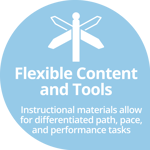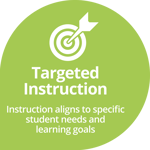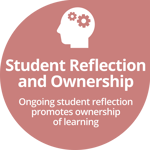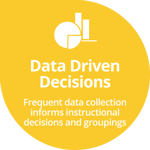When I tell friends and family about the types of projects I’m working on with Education Elements, I throw around terms like “personalized learning” and “competency-based education” like they’re the titles of new Beyoncé albums. Usually, they smile and nod politely, but sometimes they ask further questions. Recently, I had a conversation with an educator friend who had some confusion around the difference between PL and CBE. So I decided to set the record straight.
What is CBE and how does it relate to personalized learning?
Let’s start with the basics. According to CompetencyWorks, competency-based education (CBE) refers to a model in which teaching and learning are designed to ensure students become proficient in subject areas by advancing upon demonstrated mastery. Rather than setting time as the variable to determine progression towards new content (e.g. “We’ll all be starting unit two next week”), students in a CBE model advance to new material only after demonstrating their proficiency in a subject matter and ultimately showing what they know. Schools and teachers provide differentiated instruction and support for students in order for them to progress at a meaningful pace.
Competency-based education and personalized learning go hand-in-hand and both enhance the effectiveness of the other. CBE harnesses the power of personalized learning to allow students to develop and demonstrate a mastery of skills critical to lifelong learning. Additionally, CBE provides the “on” switch for personalized learning principles like providing flexible supports to students and amplifying student voice and choice in how, when, and where they learn best.
Without relying on one another’s strengths, both CBE and personalized learning can fall short. CBE without personalization, for example, can result in variable achievement among students. While students all might be working towards a common goal (proficiency), the ideal path students take towards that goal will more than likely look different from their peers. Conversely, without a competency-based structure, it’s unlikely that all students will reach desired outcomes in a personalized learning setting. The structure that CBE provides allows for consistency in validating proficiency on student work and careful monitoring of pace and progress. Consistency is important for districts and schools because they are ultimately accountable for student success.
To illustrate this point, think about a bread-making class. If the class was personalized and not competency-based, participants might have the flexibility to bake whatever, whenever, and however they want, but all of the breads that come out of the oven might look drastically different from one another. This might be because some students didn’t perfect key baking principles, like the chemistry required for yeast to work or proper kneading techniques. A competency-based bread making class might see a uniform rack of beautifully made bread from some students, but certain bakers might get left behind along the way because their needs weren’t being met.
At Education Elements, we rely on the Core Four Elements of Personalized Learning to help districts across the country implement personalized learning. Therefore, since CBE relies so heavily on personalization, I thought it might be valuable to look at it through the lens of the Core Four. Here’s a quick breakdown of how the Core Four and CBE are related in practice:
PL Core Four |
What It Looks Like in CBE |
|---|---|
|
Flexible Content & Tools Flexible content allows for differentiated path, product, and pace |
Every student’s progression towards proficiency looks different, so differentiated tools and supports are put in place to help students get to where they need to be. Students are empowered to choose the method by which they demonstrate proficiency for a given indicator when it comes time to advance to new material. |
|
Targeted Instruction Instruction aligns to specific student needs and learning goals |
Students receive timely, differentiated support based on their individual learning needs. Educators help facilitate conversations and guide students towards specific learning opportunities and resources to help them reach proficiency. Since learning objectives and expectations are clearly defined from the beginning for both the student and the teacher, both have a firm grasp on what concepts are critical to master, how to achieve mastery, and why that learning objective is significant. |
|
Student Reflection & Ownership Ongoing student reflection promotes ownership of learning |
In a CBE school, students often have the ability to determine when they are ready to complete a performance assessment rather than adhering to a predetermined date. Throughout the learning process, students are empowered to nurture a growth mindset and participate in a culture of constant learning. In a learning environment where failure is not an option, students are encouraged to constantly learn from their mistakes and see them as stepping stones on the path toward proficiency. |
|
Data-Driven Decisions Frequent data collection informs instructional decisions and groupings |
Data is consistently used to measure students’ progress towards proficiency. Competencies include explicit, measurable, transferable learning objectives that empower students to continue seeking further opportunities for mastery. |
Competency-based education upends a lot of the structures and practices we tend to associate with school — and a shift towards CBE certainly doesn’t happen overnight. However, when implemented thoughtfully with a solid supporting structure, CBE can transform the school experience for students. Furthermore, on a larger scale, competency-based education may help to reduce some of our nation’s toughest inequities, according to a 2017 Lumina Foundation report. Certainly worth the read.
Interested in learning more about bringing CBE to your district? Check out our CBE Toolkit here and you’ll find a video series about the power of competency-based education, ideas on curriculum and instruction, and lots more.
-1.jpeg)








